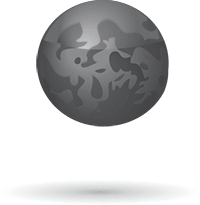What could be better on a blazing 105-degree Oklahoma afternoon than a frosty, ice-cold drink? Maybe one that freezes right before your eyes. No waiting. No messy ice trays. No clunky ice maker. Just a little science magic you can pull off in your own kitchen.
This week in our Summer Science series, we’re talking about Instant Ice — a phenomenon so quick, you can go from thirsty to holding a bottle of solid ice in seconds. It’s not a magic trick, though it looks like one. It’s actually the science of supercooling and rapid ice nucleation, where water is chilled below its normal freezing point but doesn’t turn solid until you tell it to. One tap, one pour over an ice cube, and suddenly… you’ve got a frozen waterfall in your hands.
What You’ll Need: - Bottled water (purified works best — brands like Dasani, Aquafina, or Great Value Purified) - A freezer - A plate or shallow dish - A few ice cubes - Optional: food coloring to make the ice extra visible How to Do It: 1. Place several sealed bottles of purified water in the freezer.
2. Let them chill for about 2 hours and 30 minutes — just long enough to supercool but not freeze solid.
3. Very carefully remove one bottle without shaking it.
4. Tap the bottom of the bottle sharply, pour it slowly over an ice cube, or drop an ice chip into it — watch as it freezes instantly before your eyes.
The Science Behind the Freeze: Supercooling and Rapid Ice Nucleation Water normally freezes at 32°F (0°C). But under the right conditions, it can be cooled below that temperature without actually turning into ice — a process scientists call supercooling.
Supercooling works because ice crystals need a starting point to grow — something called a nucleation site. This could be a speck of dust, a scratch in a container, or even another piece of ice. In purifi ed bottled water, there are almost no impurities, so even when the temperature drops below freezing, the water molecules keep moving in liquid form, waiting for that first nucleation site.
When you disturb supercooled water — by tapping the bottle, pouring it over an ice cube, or adding an ice chip — you create a nucleation site. That triggers rapid ice nucleation, where the first ice crystal forms and spreads in a chain reaction, locking the rest of the water molecules into solid ice in seconds.
The same process happens in nature during freezing rain and ice storms, when supercooled raindrops freeze instantly on contact with cold surfaces.
Safety Tip: Don’t leave the bottles in the freezer too long or they may burst. Check at the 2-hour mark and test a bottle.
Fun Add-On: - Try it with colored water for a more dramatic effect.
- Film the freezing process in slow motion for a shareable video.


